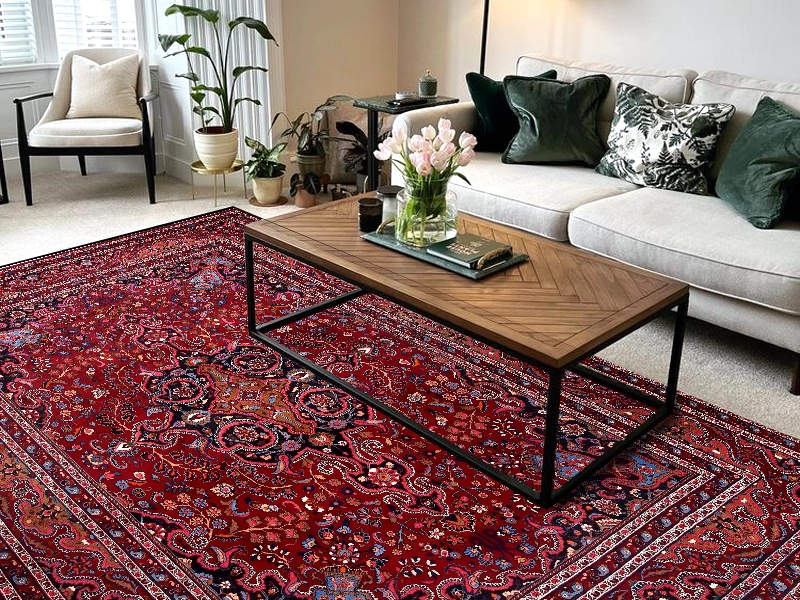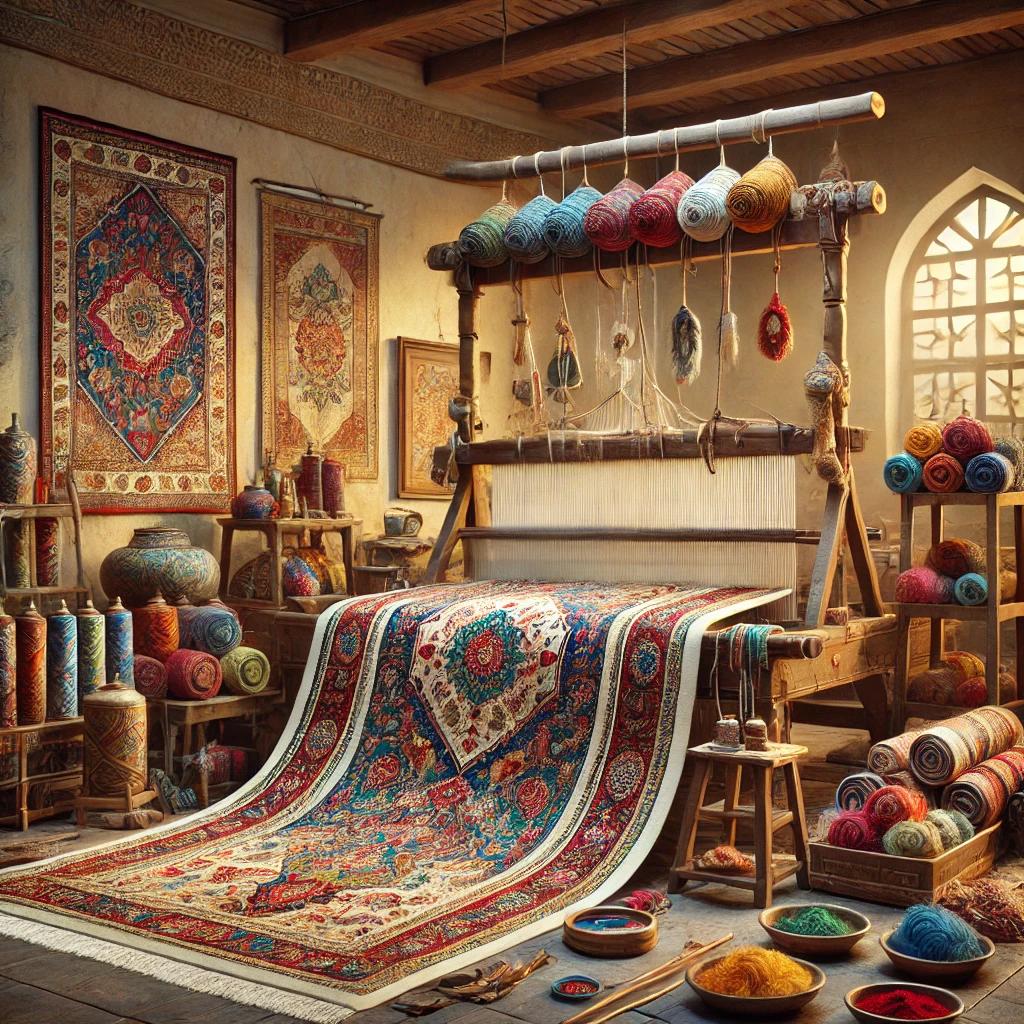
Exploring Silk Persian Rugs and Their Rich Heritage
Estimated reading time: 8 minutes
Key Takeaways
- Silk Persian rugs are celebrated for their intricate craftsmanship and luminous sheen.
- Persian weaving traditions span over 2,500 years, showcasing a rich cultural heritage.
- Wool in Persian rugs contributes to their durability and warmth, making them ideal for everyday use.
- Authenticity is crucial: look for hand-knotting, natural dyes, and regional patterns.
- The market for vintage rugs remains strong, reflecting a continued appreciation for history and art.
Table of Contents
- Introduction: The Allure of Silk Persian Rugs
- Overview of Persian Rugs: A Legacy of Artistry
- Materials Used in Persian Rugs
- Persian Rugs Techniques: The Craft Behind the Beauty
- Traditional vs. Vintage Persian Rugs
- Authenticity and Market Insights
- Conclusion: The Enduring Legacy of Persian Rugs
- Additional Resources
- Frequently Asked Questions
Introduction: The Allure of Silk Persian Rugs
Welcome to the exquisite world of silk Persian rugs, renowned for their exceptional beauty and intricate craftsmanship. These traditional oriental pieces are not just decorative items; they are a testament to centuries of artistic tradition and cultural heritage. Throughout this blog, we will delve into various materials, origins, and styles, including wool in Persian rugs, to provide a comprehensive understanding of this fascinating art form. [Source] [Source]
Overview of Persian Rugs: A Legacy of Artistry
The Historical Tapestry of Persian Rugs
Persian rugs represent an art form that has evolved over 2,500 years, originating from ancient Persia. Initially crafted by nomadic tribes and later prized in royal courts, their intricate traditional oriental designs—including floral and geometric motifs—reached new heights during the Safavid Dynasty. This flourishing era expanded both the aesthetic and technical aspects of Persian carpets, forever securing their place in the worldwide art scene. [Source] [Source] [Internal Link]
Materials Used in Persian Rugs
Silk Persian Rugs: Elegance in Every Thread
Characteristics and Advantages
Silk Persian rugs are esteemed for their luminous sheen and delicate texture, enabling highly detailed patterns. Silk’s natural luster and fineness yield vibrant, intricate designs, though its fragility means these rugs are often displayed in low-traffic areas or as wall hangings. Centers like Kashan are especially renowned for remarkable silk carpets, detailed with medallions and delicate floral motifs. [Source] [Source] [Internal Link]
Wool in Persian Rugs: Durability and Warmth
Comparing Wool and Silk
While silk rugs boast unmatched intricacy and shine, wool rugs offer superior durability and warmth, making them more practical for everyday use. Wool’s thicker, robust fibers ensure longevity, hence the prevalence of wool-based rugs in traditional tribal and rural settings. These pieces often feature natural dyes and compelling patterns. [Source] [Source] [Internal Link]
Persian Rugs Techniques: The Craft Behind the Beauty
Mastery in Knots and Dyes
A hallmark of Persian rug-making is hand-knotting, particularly the Persian (Senneh) knot. This method yields dense, durable rugs armed with intricate designs. Natural dyeing from indigo, pomegranate, and saffron ensures lasting color vibrancy. Regional patterns vary widely—Kashan and Kerman often showcase floral, geometric, and medallion motifs that highlight unique cultural traditions. [Source] [Source] [Internal Link]
Traditional vs. Vintage Persian Rugs
Distinct Styles and Influences
The Persian rug market ranges from traditional to vintage expressions. Traditional oriental rugs preserve age-old motifs and techniques, appealing to those who crave authenticity. Meanwhile, Turkish vintage rugs—famed for bold geometric patterns and the Gördes knot—often interlace with Persian styles to create unique blends. In the USA, vintage rugs have gained popularity for their eclectic, gently faded aesthetic that speaks to heritage and meticulous craftsmanship. [Source] [Source]
Authenticity and Market Insights
Valuing Authenticity in Persian Rugs
To identify an authentic Persian rug, look for elements such as hand-knotting, natural materials, natural dyes, and regional patterns. Beyond cultural significance, authentic pieces often command greater investment value. The surging vintage rug market in the USA underscores the lasting appeal of decorative arts grounded in heritage. Similarly, Turkish motifs enrich Persian traditions, weaving geometric and curvilinear elements into an ever-evolving tapestry of rug-making techniques. [Source] [Source] [Internal Link]
Conclusion: The Enduring Legacy of Persian Rugs
From the delicate silk Persian to robust wool in Persian rugs, each piece captures a legacy of artistry and tradition. Their intricate knotting methods, exquisite dyeing, and storied motifs have secured an eternal place in world culture. Whether you’re an avid collector or a curious newcomer, diving into the cultural depths of Persian rugs offers a mesmerizing glimpse into a time-honored craft.
Additional Resources
If you wish to explore further, consider resources dedicated to rug care, authentication, and buying tips. Engaging with specialist galleries and academic works can deepen your understanding of both Persian and Turkish weaving traditions, revealing how history and style intertwine to form breathtaking art.
Frequently Asked Questions
Silk Persian rugs are typically not ideal for high-traffic zones due to their delicate fibers. Many collectors display them as wall hangings or in low-traffic areas to preserve their sheen and detailed patterns.
Look for hand-knotting, examine the rug’s back for consistent knots, and verify the use of natural materials like wool or silk. Regional motifs also provide clues about a rug’s origin and authenticity.
In recent years, home decor trends celebrate a mix of modern and traditional aesthetics. Vintage Persian rugs add warmth and a sense of history, appealing to those who appreciate the intersection of art and architecture.
While both traditions boast a rich history, Persian rugs often feature the Senneh knot, characterized by curvilinear patterns and intricate floral motifs. Turkish rugs frequently use the Gördes knot, emphasizing geometric motifs and bolder coloration.


